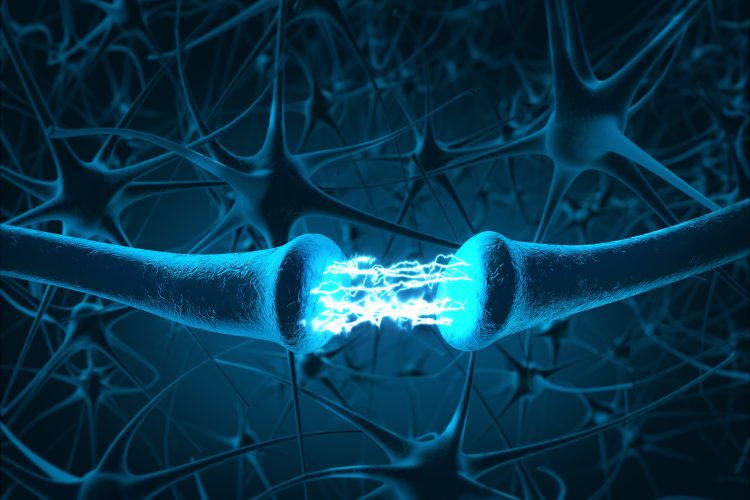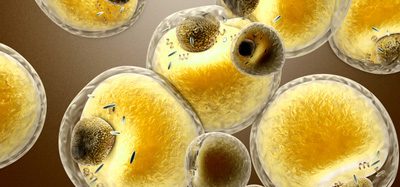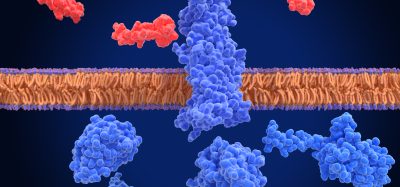New material engineered can repair severed nerves
Posted: 18 October 2023 | Drug Target Review | No comments yet
Researchers designed the first magnetoelectric material that precisely stimulates neurons to treat nerve damage.


Scientists have long seen the therapeutic potential of using magnetoelectrics, materials that can turn magnetic fields into electric fields, to treat neurological disorders or nerve damage by stimulating neural tissue as non-invasively as possible. However, neurons have difficulty responding to the shape and frequency of the electric signal resulting from this conversion.
Published in Nature Materials, Rice University neuroengineer Dr Jacob Robinson and his team designed the first magnetoelectric material that solves the issue and also performs the magnetic-to-electric conversion 120 times faster than similar materials. The researchers demonstrated the material can be used to precisely stimulate neurons remotely and to repair the gap in a broken sciatic nerve in a rat model.
Robinson said that the material’s qualities and performance may have a significant impact on neurostimulation treatments, resulting in less invasive procedures. Tiny amounts of the material could be injected at the desired site instead of implanting a neurostimulation device. Magnetoelectrics’ can be applied to computing, sensing, electronics and other fields, so the research provides a framework for advanced materials design that may push innovation more widely.
Joshua Chen, Rice doctoral alumnus and lead author, said: “We asked, ‘Can we create a material that can be like dust or is so small that by placing just a sprinkle of it inside the body you’d be able to stimulate the brain or nervous system?” He continued: “With that question in mind, we thought that magnetoelectric materials were ideal candidates for use in neurostimulation. They respond to magnetic fields, which easily penetrate into the body, and convert them into electric fields ⎯ a language our nervous system already uses to relay information.”
The researchers began with a magnetoelectric material made from a piezoelectric layer of lead zirconium titanate sandwiched between two magnetorestrictive layers of metallic glass alloys, ‘Metglas’, which can be quickly magnetized and demagnetised.
Dr Gauri Bhave, a former researcher at the Robinson lab who currently works in technology transfer for Baylor College of Medicine, explained that the magnetorestrictive element vibrates with the application of a magnetic field.
“This vibration means it basically changes its shape,” Bhave stated. “The piezoelectric material is something that, when it changes its shape, creates electricity. So when those two are combined, the conversion that you’re getting is that the magnetic field you’re applying from the outside of the body turns into an electric field.”
Therefore, a new material was engineered that generated electric signals for cell response, made from layered platinum, hafnium oxide and zinc oxide which was placed on top of the original magnetoelectric field.
“A lot of work went into making this very thin layer of less than 200 nanometres that gives us the really special properties,” Robinson said.
“A lot of work went into making this very thin layer of less than 200 nanometres that gives us the really special properties,” Robinson said.
“This reduced the size of the entire device so that in the future it could be injectable,” Bhave added.
The scientists used this material to stimulate peripheral nerves in rats and demonstrated its potential for neuroprosthetic use, as it could restore function in a severed nerve.
“We can use this metamaterial to bridge the gap in a broken nerve and restore fast electric signal speeds,” Chen said.
“We can use this metamaterial to bridge the gap in a broken nerve and restore fast electric signal speeds,” Chen said.
Robinson drew on his doctoral work in photonics for inspiration in manufacturing the new material and said he finds it “really exciting that we can now design devices or systems using materials that have never existed before rather than being confined to ones in nature.”
Related topics
Neurons, Neurosciences, Technology
Related organisations
Baylor College of Medicine, Rice University







